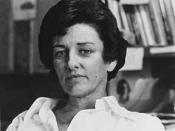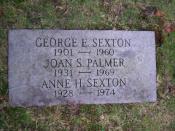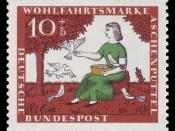CN 2: Sexton's "Cinderella"
"Cinderella" by Anne Sexton is a different variation of the classic tale. Sexton alters the "Recurring, happily ever after" in every tale, to a more modernize version. Four anecdotes sharing how others can go from poor to riches or abrasive existence to fantasy. Sexton changes the expected happy ending by satirizing the message this story gives. The poem with little anecdotes of unexpected reality, Sexton's sarcastic tone foreshadows the outcome. She implies for the reader to know the difference between a fairy tale and reality. Sexton deconstructs the ending of her retold fairy tale by using sarcasm to change the reader's expectations of the farfetched fairy tale.
There is little emotional attachment seen by either Wilhelm Grimm's "Ashputtle", and Anne Sexton. The serious interest in folklore was spurred in the stories collected by Jacob and Wilhelm Grimm. Ashputtle begins by introducing the reader to a young girl at the bedside of her dying mother imposing a different sense of appeal.
Although it appears to be a tale targeted for the common class, there is still a division of classes in the society, as the story begins with, "A rich man's wife... "
Tales change and form similar interpretation, style, presentation, appearance, and meaning.Raising the concept of a wicked stepmother who treated the first daughter of her husband harshly with extreme dislike.
Myself, residing in a close knit family I have to admit that I am entertained by the sarcastic alterations provided by Sexton. Grimm's Ashputtle forthcoming emotions would stress that I do prefer the "Happily ever after," tale of love.
It seems no surprise that contemporary author, Anne Sexton, created her own version of the classic Cinderella story. Jakob and Wilhelm Grimm are credited with collecting over two hundred folk tales from...


